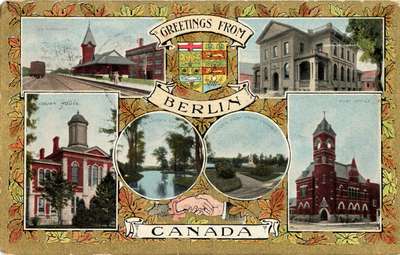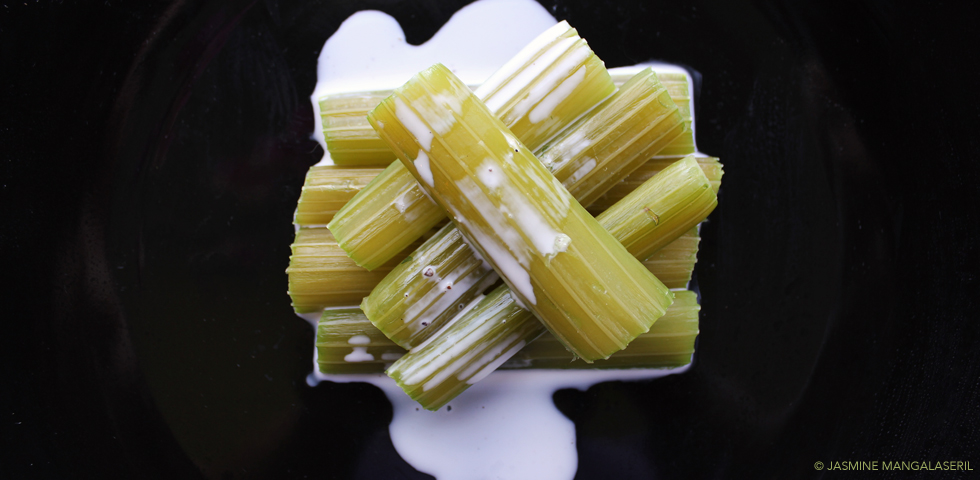
Sorting through thousands and thousands of names
With the name change vote done and over with, Aldermen Cleghorn, Hahn, Hallman, Rudell and Master winnowed the estimated 30,000 submitted names to 113. They easily tossed thousands of entries: contest rules precluded names already in use in Canada (the Post Office demanded an original name). It seems as if the group imposed new, previously unpublished, rules as to what constitutes an acceptable suggestion: names couldn’t be related to present or previous wars, and names of famous generals, statesmen, (etc.) were removed from contention.
The selection meeting
I doubt if a more unbusiness-like meeting was ever conducted!
On 29 May The Committee of 99 met to create a shortlist of new city names, to be submitted to city council. Some members wrote to The Berlin News-Record, about some funny business that occurred before the men could settle in their chairs.
One wrote, “…someone said ‘I move that Ald. Hahn act as chairman.’ ‘I second that,’ said another voice close by. ‘Carried,’ cried a third. Whereupon that gentleman ascended to the chair. The appointing of the chairman took less time that it takes to relate.”
Another highlighted the fact no official record was made, for what was bound to be one of the most important meetings in the city’s history: “The entire proceedings looked to me like a farce…Why! A secretary even was not appointed! Think of the citizens!”
A common theme was a perceived insult to Mayor Mayor Hett. As Hahn was declared chair—before the meeting had begun—Hett couldn’t properly open the meeting, nor call to vote on whom should be chair.
Has amalgamation met its Waterloo?
Mayor Hett and Waterloo’s Mayor Hilliard spoke on behalf of the joint amalgamation committee, who wanted to have “Waterloo” as one of the six names shortlisted. That way, Berliners could (in a sense) vote to join their city with the neighbouring town. Hahn closed discussion immediately: it broke Post Office naming rules, and “to foist the name of Waterloo on the city is too much like the tail wagging the dog.” Besides, if Berliners accepted the name, but Waterlooites rejected amalgamation, “this city would be left in a sorry and ridiculous plight.”
The letter writers believed Hahn’s sudden chairmanship was to ensure Waterloo wasn’t on the final list.
Getting to business
Selection took place in three stages:
- Members cried “yea” or “nay” when each name was called out. Any with at least 12 yeas made it to the next round. At the end, the list stood at 25 possibilities.
- Names were checked against a list of names of American communities (another previously unmentioned hurdle), resulting in names such as Brock, Brocton, Chicopee and Bretania being cut. The following made it to the next stage: Angoleo, Benavy, Bercana, Canadia, Canata, Dunard, Huronto, Hydro City, Industria, Keowana, Nundawa, Ontario, Ontario City, Renoma, and Scotteby.
- The final selection was made using the Hare-Spence ranked balloting system, with each member marking his 1st-6th choices. The final six names (with tallies (according to The News-Record)) were:
- Huronto – 65
- Bercana – 60
- Dunard – 46
- Hydro City – 40
- Renoma – 29
- Agnoleo – 26
(Canata, Canadia, and Keowana each received 24 votes; Nundawa received 20; No figures were given for the rest.)
Ummm. Really?
When the six names were announced, some Committee members immediately complained. Alderman Reid thought if Bercana were selected, soon the city would soon be called “Beer Can.” Hahn declared a motion to have the name struck off as out of order.
The next morning Berliners let their city council know exactly what they thought of the shortlist. Various newspapers also weighed in:
- “If Agnoleo & Co. are representative of the quality of accepted suggestions, the quality of the rejected suggestions must be truly appalling.” ~ The News-Record
- “Why under the sun didn’t they put in Onions and Geraniums to fill out the list?” ~ Guelph Mercury
- “They [the selections] looked as if they had been formed by picking letters haphazard out of a bag.” ~ Hamilton Spectator
- Tiny, Floss and Tay, Ontario townships named after the pet dogs of Governor Simcoe’s wife, compare favourably with the suggested names for Berlin, Ont.” ~ Mail and Empire
- “No, dear reader, those are not characters in grand opera—they are Berlin’s choices of names.” ~ Stratford Herald
The “Ninety and Nine”
Apparently others thought the shortlist sounded like characters from an opera, Aristophanes, or some other work. This parody of George Vere Hobart’s 1908 work, Go To It appeared in The News-Record on 31 May 1916.
The “Ninety and Nine:” Oh Committee! What Hast Thou Done.
Huronto, the son of Dunard, called his wife to his side and spake saying:
“Agnoleo, the soft whiteness of thy cheek is fairer than the bloom that loves to linger on the lilies of the Nile. Thine eyes are twin thieves, which by some sorcery have ta’en the light from yon poor weeping Waterloo.”
And Agnoleo, the wife of Huronto, the son of Dunard made answer, “I care not for thy flattery, I am a jealous woman and love not my neighbour, her name, nor her Ox, nor her Ass, nor anything that is hern (pronounced hahn). And it shall not be my soft whiteness that will break up the inner circles of the Krupp Gun, but call though upon Bercana, son of Renoma.
And great joy shone forth from the lamps of Bercana whilst Huronto wept.
But it came to pass that a certain man of genius came forth, out of the wilderness of Niagara and in a roaring voice cried aloud “Huronto! Bercana! Dunard! Renoma and Agnoleo! Gather together the rest of your diminutive families and journey with me to Hydro City.”
To which command they made swift answer and spake saying, “Let’s!”
And the cityman’s wife and his nearest kinswoman and all the members of the Five tribes forsook their names and their clothing and followed the man of genius into the City of Hydro. Their hearts were glad within them for the scene was fair to look upon, and Huether’s place was full of cold beer.
But alas! When their mighty thirst they would slake they found that Hydro was right for, within the bottles and kegs the hydro possessed but a three per cent kick. So, with one accord they cast their eyes upon the calendar and saw thereon September 17th, 1916. Then did Huronto, the son of Dunard, and his wife Agnoleo, together with Bercana, the son of Renoma become attacked with Hydro-phobia and, falling upon each other’s necks, passed in silence out of sight.
Notes
- I found explanations for three of the shortlisted names, as given by the submitters:
- Agnoleo: Taken from Waterloo County’s coat of arms, it is a combination of the Latin words for lamb and lion (Agno, Leo). It suggests the peacefulness, purity and strength—qualities the city should strive towards (The News-Record – 21 March 1916)
- Dunard: An original portmanteau created for the contest, from words meaning, “mound” or “hill,” and “high;” it refers to the “mound shape” of the city. (The News-Record – 16 March 1916)
- Hydro City: Favoured by the Travellers’ Association, and refers to the city’s industrious nature (Berlin Daily Telegraph 29 February 1916)
Want a bit more information?
- About the Kitchener 1916 Project
- Click here to read the list of 113 names, as voted on by The Committee of 99
The Recipe
 Stewed celery (with or without cream) is something I don’t see served, and is something I haven’t found in my (modern) cookery books. It’s a very basic (and somewhat bland) recipe (boil the stalks in salted water and serve with warmed, flavoured cream). The writer offered variants, including a white sauce—I imagine that would take this dish closer in flavour to a cream of celery soup.
Stewed celery (with or without cream) is something I don’t see served, and is something I haven’t found in my (modern) cookery books. It’s a very basic (and somewhat bland) recipe (boil the stalks in salted water and serve with warmed, flavoured cream). The writer offered variants, including a white sauce—I imagine that would take this dish closer in flavour to a cream of celery soup.
Stewed Celery with Cream, From The New Galt Cook Book (1898)
Boil six heads of celery in salted water until tender. Put half a pint of cream and a blade of mace into a saucepan; shake the saucepan over the fire until the cream thickens; dish the celery, pour the sauce over it and serve. Stewed celery may also be served with white sauce, or like asparagus, on toast, with melted butter poured over it. It is delicious in either way.
Stewed Celery with Cream (Modern Equivalent)
Serves: Many
| 6 | 6 | 6 | Heads (bunches) of celery, washed |
| 285ml | 285ml | 1 Cup + 2-½ Tablespoons | Cream |
| 1 | 1 | 1 | Blade of mace |
Trim the celery ribs and cut into thirds. Slice the down the length so they are of roughly equal thickness.
Place the stalks into cold salted water and bring to a boil. Let boil until stalks are fork tender. Drain.
Meanwhile, place the cream and mace into a saucepan and over a medium-low flame, and whisk well, until thick.
Plate the celery and pour the cream over top.
Notes
- When I tried the recipe, I couldn’t bring myself to cooking six heads of celery for this dish, so instead I made the equivalent of one or two servings (two stalks), and with a generous tablespoon of seasoned cream.
- If you don’t have mace, use about ¼ teaspoon of nutmeg with a couple of ground allspice berries.

[…] 26 May-01 June 1916: Oh Committee! What hast thou done?/Stewed Celery with Cream […]